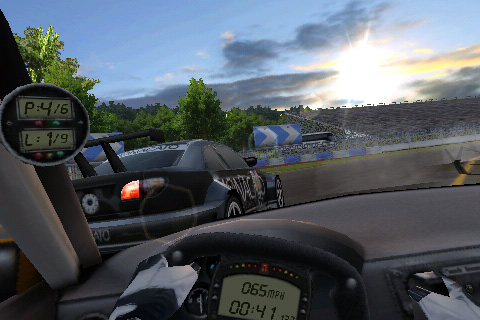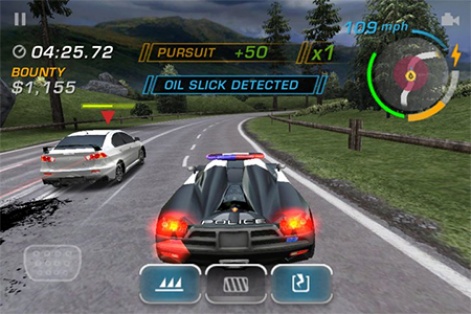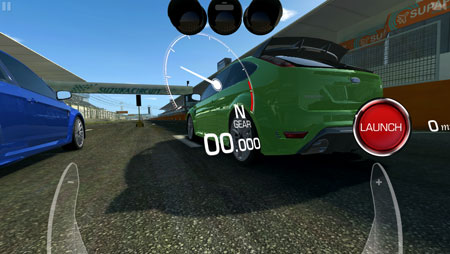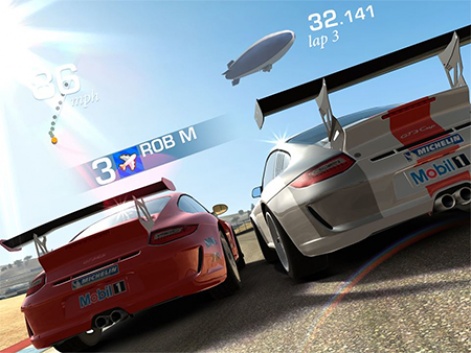Someday, we may look back on this era of the App Store and declare the time of death for the paid app as 28 February, 2013 - the worldwide release day for EA and Firemonkeys' Real Racing 3.
The game boasts some of the best graphics seen on iOS or Android, has loads of real cars and tracks, and innovative asynchronous multiplayer gameplay.
It is also is free-to-play, generating revenue by selling cars and two forms of currency, with at least one car requiring an in-app purchase of nearly $100 in order to buy.
Real Racing 3 isn't just going for mass-market appeal in going free, it's trying to make a lot of money from its dedicated players.
Start your engines
While paid games have made the shift to free-to-play in the past, the reason Real Racing 3 stands out as a bellwether app is because this was originally the flag carrier for premium-priced games.
Ever since the 2009 original, Real Racing has been known for its amazing graphics, realistic gameplay, and typically high price points even though the sequel was frequently 99c thanks to EA's propensity to put a game on sale for any minor holiday.

The original Real Racing, released in 2009
The game has generally performed well on iOS: even two years after its release date, the game still floats around the top 200 in games.
The Android version is a year younger, and has sold less than 100,000 copies based on basic Google Play sales information, plus unknown additional sales from third-party app stores.
Now, the series is abandoning its cost of entry entirely, likely to expand its audience on both iOS and Android (where a simultaneous launch is planned) and is hoping to hook players in enough to spend money on in-app purchases.
This is a risky move, not because it's a traditional game genre going free-to-play. There's evidence aplenty of such transitions working out fine on other platforms - look at League of Legends, World of Tanks, and Team Fortress 2. It's not impossible.
But on iOS and Android, the top grossing charts are dominated by non-traditional gaming genres. Puzzle games like Candy Crush Saga and Bejeweled Blitz. Social games like The Simpsons: Tapped Out and ones that involve competitive multiplayer like Clash of Clans and Kabam's titles.
A question of convention
'Conventional' games do make appearances on the chart in the US - such as Minecraft: Pocket Edition, Infinity Blade 2, and Call of Duty: Black Ops Zombies - but these all have a running thread through them: they sell for $6.99, so even if users don't spend money on IAP, then they still get money from them off the bat.
Infinity Blade has entered the top 100 grossing since going free, but is still behind the sequel at full price. For a direct genre comparison, Need for Speed: Hot Pursuit is at number 100 in the top games, but it sells for $2.99 and is less focused on in-app purchases.
So, EA and Firemonkeys are definitely entering new territory.

Need for Speed: Hot Pursuit
The real problem, however, is that Real Racing 3 is a game that's been in the works for a while, and comes packed with incredibly high production values.
This is a game that can't afford to just float about the top charts. It needs to do well for a prolonged period of time in order to be a success, and there's not a lot of evidence that a conventional racing game - as opposed to one tuned for free-to-play mechanics at its heart like CSR Racing - can be an extreme success.
NaturalMotion's chart topper was, at one point, earning $12 million per month and is currently number 16 in top grossing in the US right now, which is better than the rank Real Racing 3 has amassed during its soft launches in either New Zealand (#17) or Australia (#32) - albeit before EA ramps up marketing and user acquisition efforts worldwide.
Setting an example
Real Racing 3's performance longterm, however, could have a major impact on the rest of the industry.
If the game succeeds, it could be a sign that traditional, 'core' gaming genres can succeed in a free-to-play model, and risks can pay off.
Gameloft and Zynga have both experimented with free-to-play in their 3D games, but still largely with games attuned to the model.
If Real Racing 3 shows that a conventional title can have the same level of success as something like Puzzle and Dragons - which is reportedly earning over $54 million per month - then it's possible that more efforts will be made to release conventional games that fit the model.
The end result is, selling conventional games as free-to-play experiences would suddenly be perceived as less of a risk than it would be to sell them as a premium price.

Real Racing 3
There's a chance paid releases wouldn't disappear off the face of the earth, but Real Racing 3 would stand as the prime motivation for another developers to make the same move.
However, what if the game flounders? With EA's marketing muscle, and the massive hype cycle behind the app that few other apps have seen, the game is sure to make significant amounts of money.
But what if it sits in the middle of the top 100, or lower?
What if it occupies the position that Need for Speed: Most Wanted does over the long-term in terms of revenue? What if it doesn't make enough to be profitable, or at least not enough to justify EA greenlighting more of these big-budget free-to-play projects, when a cheaper social game could be made with a higher possibility of financial success?
If any of that happens, then the chances of more traditional games going free-to-play would undoubtedly be damaged. Given more and more of the industry is heading the F2P route, there's also a chance developers would consider big-budget titles a waste of time altogether.
The real story
To summarise, if even EA can't manage to out-sell slot machine apps with well-crafted releases, then why would anyone else put the effort into it?
Indies need to pay heed to all this. If Real Racing 3 can't succeed under a free-to-play model, then those who wish to make conventional games should consider their business model very carefully: paid apps are a risk as it is, and trying free-to-play could be an even bigger one.
But if Real Racing 3 is a runaway success? Then it may be time to embrace free-to-play for those developers that are trying to make a living. Developing a game from the ground up with free-to-play in mind will become a matter of course.
It may just be one game, but considering its stature, how well Real Racing 3 does could be a harbinger for the future fate of the industry.






















